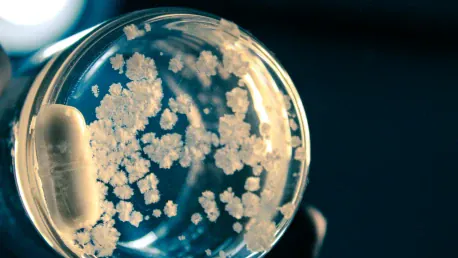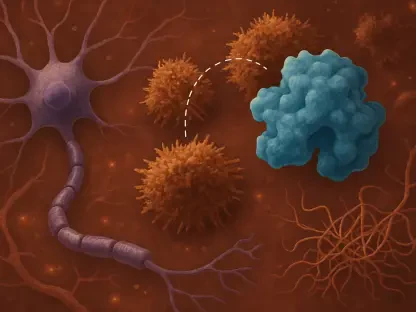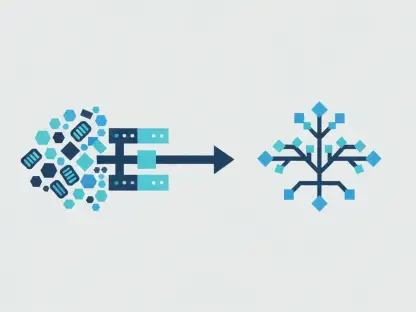The intersection of synthetic biology and visual art has given rise to an innovative field known as bioart. This interdisciplinary collaboration leads to creations that challenge traditional perceptions of both science and art. With advancements in biotechnology, artists can now incorporate living organisms into their works, blurring the lines between these two fields and fostering fresh perspectives and dialogues.
Historical Transformation in Artistic Mediums
The Evolution of Art Through Technology
The integration of technology into the arts has a long history. Artists continuously adopted new technologies to broaden their expressive capabilities. The transition from handmade pigments to ready-made paints in the late 19th century is one such example. This shift allowed artists to leave their studios, capturing the world quickly and dynamically. The introduction of photography brought new ways to capture and interpret reality, forever changing artistic perspectives.
The current era of biotechnology marks another transformative period in art. Just as the invention of the camera expanded the boundaries of creative expression, the use of living organisms in art pushes these boundaries even further. This evolution sets the stage for integrating the latest biotechnological advancements into creative endeavors, offering artists new mediums and techniques to explore. Such convergence of art and synthetic biology illustrates the ever-changing landscape of artistic innovation.
Drew Endy’s Perspective on Representation
Drew Endy of Stanford University provides insightful commentary on the expansion of artistic representation through modern scientific tools. He emphasizes that these advancements enable a broader range of subjects and techniques, challenging conventional norms and broadening the scope of creative expression. Artists are no longer confined to traditional materials; they can now work with biological elements, adding layers of complexity and meaning to their creations.
Endy highlights the importance of this intersection in redefining our understanding of both art and science. As tools and techniques evolve, so too does the potential for representation. This dynamic interplay allows artists to explore themes that were previously inaccessible, paving the way for innovative forms of expression. The shift from traditional methods to advanced technologies facilitates a deeper exploration of complex subjects, merging scientific inquiry with artistic creativity.
Living Cells as New Art Mediums
Synthetic Biology Meets Art
Contemporary bioart takes synthetic biology’s principles and merges them with artistic practices, transforming living cells into new art mediums. By designing biological systems that do not naturally occur, artists embody the essence of innovation. This merging of scientific precision with creative imagination leads to works that are not only visually compelling but also conceptually profound. The use of living cells adds a dynamic, ever-changing element to these artistic creations.
Such works challenge viewers to rethink their relationship with living systems, nature, and technology. This blend of art and synthetic biology fosters a unique dialogue about what constitutes life and the ethical implications of manipulating it for artistic purposes. Artists working in this space push the boundaries of what is possible, creating pieces that are both scientifically significant and artistically groundbreaking. The medium itself becomes a part of the message, prompting viewers to engage with complex questions about life and technology.
Pioneering Works in Bioart
Early bioart projects laid the foundation for integrating biotechnology into artistic practice. One notable example is Joe Davis’s Microvenus project, which encoded non-biological information into DNA. This groundbreaking work demonstrated the potential for using DNA as a medium for artistic expression, transcending traditional forms and pushing the limits of what art can be. It showcased the possibility of embedding cultural symbols within the very fabric of life, creating a new dimension of representation.
These pioneering efforts opened the door to a myriad of bioart projects. Artists began to explore the potentials of synthetic biology, leading to an array of creations that utilized DNA and other biological components. Each project expanded the boundaries of the medium, challenging conventional views on art, science, and the intersections between them. These early works set a precedent for how artists can engage with biotechnology, creating a legacy that continues to inspire and evolve.
Practical Experiments in Bioart
Cultured Meat and Bioengineered Textiles
Bioart practitioners like Christina Agapakis have ventured into practical experiments that merge biotechnology with artistic creation. One area of exploration involves cultured meat and bioengineered textiles. Agapakis, along with other artists, has created semi-living steaks and leather from cell cultures. These projects not only serve as artistic statements but also anticipate industrial applications, addressing issues of sustainability and ethical consumption.
The creation of bioengineered textiles from cultured cells presents a solution to the environmental and ethical challenges posed by traditional textile production. These artistic endeavors highlight the potential of biotechnology to create sustainable materials, resonating with ongoing discussions about the future of food and materials. These bioart projects bridge the gap between artistic innovation and real-world applications, showing how art can contribute to solving pressing global issues.
Medical Innovations from Artistic Collaborations
Artistic experiments in bioart often translate into practical medical innovations. A notable example is the 2009 iGEM team from the University of Cambridge, who developed E. coli bacteria that change color in response to environmental stimuli. This project showcases how bioart can lead to simplified disease diagnostics, with the potential to impact medical practices significantly. By making complex biological processes visible, such innovations could make diagnosis more accessible and understandable.
These collaborations between artists and scientists exemplify the practical benefits of interdisciplinary work. Artistic approaches often bring fresh perspectives to scientific challenges, leading to innovative solutions that might not emerge within a single field. The fusion of art and science within bioart encourages the development of novel technologies and applications, demonstrating the potential for creative thinking to drive scientific advancement and ultimately improve human health.
Ethical and Speculative Commentary
Bioart as a Platform for Eco-Critiques
Bioart frequently serves as a platform for eco-critiques and speculative works. These projects often question the ethical implications and potential risks associated with synthetic biology. For instance, Stéphanie Morissette’s bird/drone hybrids and Revital Cohen and Tuur Van Balen’s speculative bacterium designed to turn pigeon feces into soap raise profound questions about engineered nature’s future. These provocative works encourage viewers to contemplate the consequences of biotechnological advancements.
Such speculative bioart projects act as commentaries on the current trajectory of science and technology. They invite critical reflection on how these advancements intersect with ecological systems and societal values. By envisioning possible futures, artists contribute to a dialogue about sustainability, ethics, and the long-term impact of manipulating biological systems. These projects challenge audiences to engage with difficult questions and consider the broader implications of our technological pursuits.
Steering Scientific and Artistic Dialogue
Bioart plays a crucial role in steering both scientific and artistic dialogue towards more holistic and ethical considerations. Artists in the bioart field are often seen as visionary pioneers, challenging the instrumental value of biological tools and advocating for a more nuanced understanding of their applications. By critiquing the methods and motivations behind scientific advancements, they create spaces for new dialogues that consider ethical, ecological, and societal impacts.
The interplay between bioart and science encourages a more integrated approach to technological development. By challenging each other, artists and scientists can push the boundaries of their respective fields, promoting a deeper examination of the implications and responsibilities tied to their work. This dynamic interaction fosters an environment where innovative solutions emerge, not just from scientific ingenuity, but also from creative and ethical considerations. The contributions of bioart, therefore, extend beyond aesthetics, influencing the very direction of scientific exploration and its integration into society.
Future Considerations in Bioart
Synthetic biology and visual art have intersected to create an innovative discipline known as bioart. This interdisciplinary endeavor results in works that challenge conventional understandings of both science and art. Biotechnology has progressed to the point where artists can integrate living organisms into their masterpieces, merging the boundaries between these two branches and generating new perspectives and conversations.
Bioart isn’t just about the scientific blending of art but sparks a larger dialogue about life, ethics, and the future of both fields. Artists collaborating with biotechnologists are pushing the envelope, crafting pieces that make people rethink the role of life in art and the artistic potential of scientific processes. These works often provoke contemplation about the relationship between humans and the living world, turning art into a medium for discussing biotechnological advancements and their implications on our society. In essence, bioart serves as a bridge between the creative and scientific communities, fostering innovative thinking and expanding our perceptions of both.









